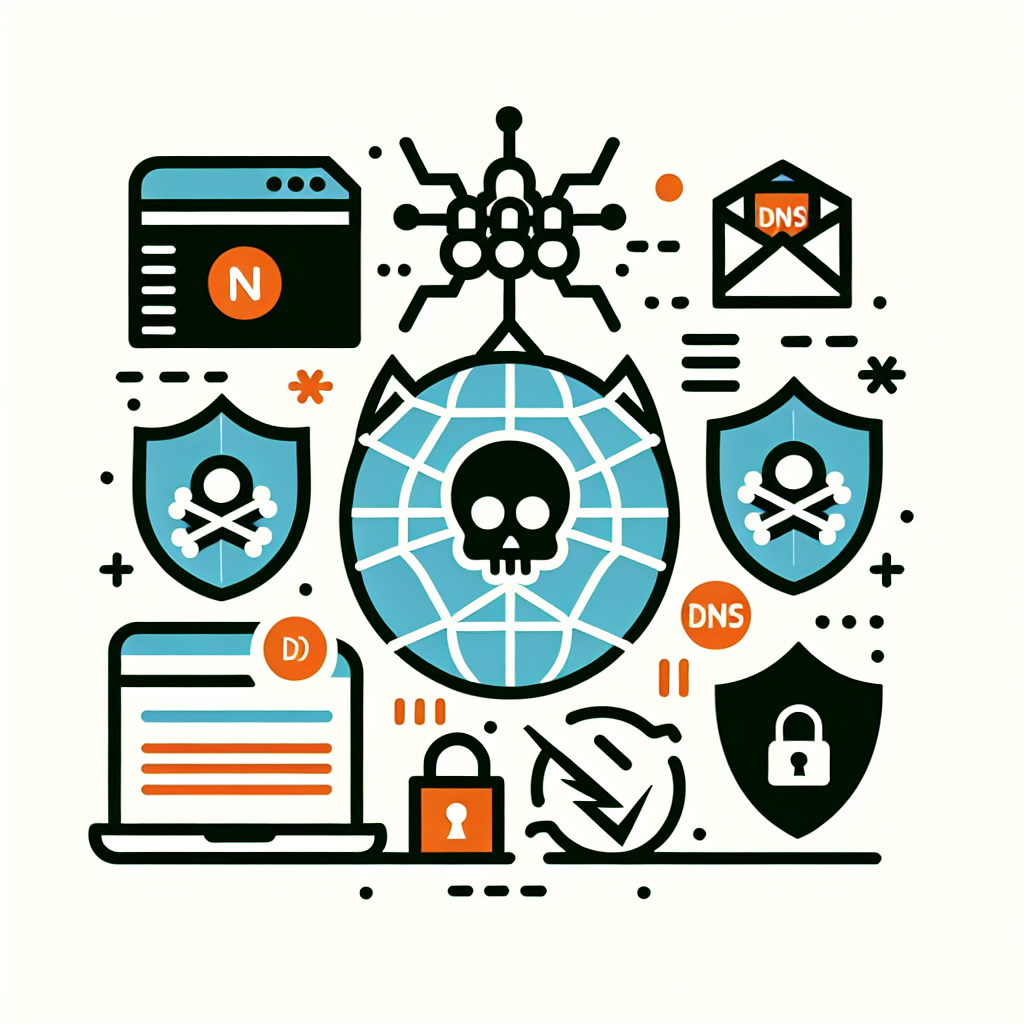
DNS poisoning lets attackers replace valid DNS answers with malicious ones so users are routed to attacker-controlled sites. This piece answers common operational questions and gives concise, prioritized steps for detection and mitigation.

DNS poisoning is when false DNS records are injected into a resolver’s cache so legitimate domain names resolve to attacker-controlled IPs. Attackers exploit trust in DNS infrastructure to redirect traffic for fraud, malware delivery, or surveillance. Poisoned entries remain active until the resolver refreshes or the record is removed. This affects public resolvers, ISP systems, and internal name servers alike. The impact ranges from credential theft to large-scale operational outages.
At its core, the attacker sends forged DNS responses or alters resolver data so the wrong IP is returned for a domain. They may race legitimate responses, guess transaction IDs, or compromise upstream DNS infrastructure to insert bad records. Once cached, the resolver gives that false mapping to many clients. Attackers then host convincing phishing pages or malware on the hijacked IP. One injected record can therefore affect thousands of users.
DNS poisoning typically refers to persistent bad entries stored in resolver caches, while spoofing is a broader term for sending forged DNS responses or intercepting queries. Poisoning is cache-focused and can last longer because incorrect data gets reused. Spoofing might be a transient interception affecting a single session. Both manipulate name resolution, but the mitigation approaches can differ. Understanding the distinction helps prioritize detection and response steps.
DNS cache poisoning specifically means injecting incorrect answers into a resolver’s cache so that future lookups return the wrong IP address. The caching mechanism multiplies the impact because a single bad response serves many clients. Correct cache configuration and limited acceptance of external data reduce the attack surface. Attackers target cache refresh cycles and predictable identifiers to succeed. Regular cache hygiene and monitoring limit persistence.
Attackers aim at any resolvers or clients where they can alter name-to-IP mappings: public DNS services, ISP resolvers, corporate name servers, and even individual devices. They prioritize targets that affect many users, such as popular public resolvers or major ISP infrastructure. Supply chain and hosting compromises also let attackers change authoritative records at scale. The objective is often credential theft, financial fraud, or establishing command-and-control channels.
Unexpected redirects and browser certificate warnings are the most obvious indicators for end users. Technical signs include inconsistent DNS answers across different resolvers, unusual entries in DNS logs, and spikes in requests to unfamiliar IPs. Endpoint alerts for new remote connections and sudden authentication failures also suggest compromise. Regularly checking responses with tools like dig or nslookup helps identify anomalies quickly. Early detection narrows the window for attacker activity.
History shows both academic and criminal examples where DNS manipulation caused major losses and outages. Notable incidents include large-scale cache attacks that exposed DNS weaknesses and ISP-level redirection used for ad insertion or censorship. Criminal groups have used DNS hijacking to steal cryptocurrency and credentials. These events underline the need for layered defenses and fast incident response. Lessons learned emphasize patching, monitoring, and least-privilege resolver configurations.
For organizations, risks include credential compromise, data theft, malware distribution, man-in-the-middle interception, and reputational damage. Poisoned DNS can enable lateral movement inside networks if internal resolvers are impacted. Customer-facing services redirected to fake sites cause immediate trust and revenue loss. Regulatory and compliance consequences also follow if sensitive data is exposed. Addressing DNS security reduces these attack vectors significantly.
Detect poisoning by monitoring DNS query/response patterns, comparing answers across trusted resolvers, and tracking certificate/TLS warnings from clients. Use automated tooling to flag mismatched IPs and abnormal TTL changes. Correlate DNS logs with endpoint telemetry to catch unusual outbound connections. Regularly run dig/nslookup checks against authoritative servers to confirm correct mappings. Rapid containment involves switching resolvers and clearing caches.
Defend with multiple layers: enable DNSSEC, restrict recursive resolver access, use reputable DNS providers, and enforce strict egress policies. Patch resolver and authoritative server software promptly and avoid open resolvers that accept any source. Apply TLS everywhere and monitor certificate validity so users get warnings on forged sites. Network segmentation limits how far poisoned records can spread inside an enterprise. Combine these measures with active DNS logging and alerting for best results.
DNSSEC adds digital signatures to DNS records so resolvers can verify authenticity before caching responses. Properly implemented DNSSEC stops many record-forging attacks because falsified answers won’t validate. It does require correct setup across authoritative zones and resolvers and is most effective when paired with monitoring. DNSSEC reduces attack success but doesn’t eliminate the need for other controls like secure resolver configs and TLS enforcement. For implementation guidance, see Palisade’s resources at Palisade.
Immediately switch affected clients to trusted resolvers, clear caches on recursive servers, and isolate any systems making suspicious connections. Perform forensic analysis on DNS logs and endpoints to identify the initial compromise and scope. Reissue credentials and certificates if there’s evidence of key or credential exposure. Patch vulnerable systems and tighten resolver access controls to prevent recurrence. Finally, inform stakeholders and update incident playbooks to include DNS compromise scenarios.
Yes. Although mitigations have improved, misconfigurations and unpatched resolvers keep DNS attacks viable—especially at ISP and enterprise levels.
DNSSEC prevents many forging attacks by enforcing cryptographic validation, but it must be correctly implemented and used alongside monitoring and secure resolver practices to be fully effective.
Home users can look for certificate warnings, unexpected redirects, and verify a domain’s IP via multiple public resolvers using nslookup or online DNS checkers.
Running internal resolvers gives visibility and control but requires disciplined patching, access restrictions, and monitoring to avoid creating a new attack surface.
Palisade offers tools and practical guidance for DNS hardening and incident response—visit Palisade to learn more.